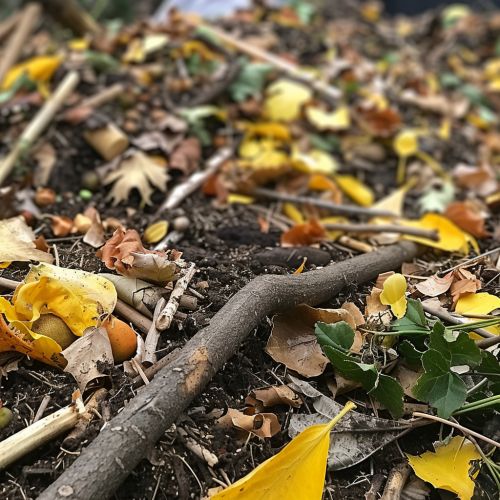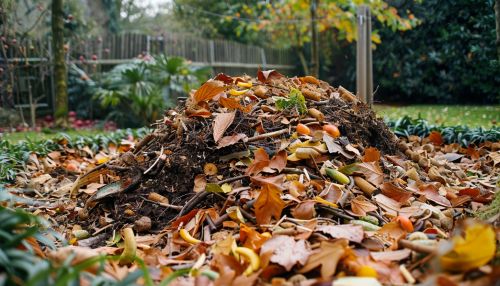Compost
Overview
Compost is a key ingredient in organic farming. At the simplest level, the process of composting requires making a heap of wet organic matter (also called green waste), such as leaves, grass, and food scraps, and waiting for the materials to break down into humus after a period of weeks or months. The decomposition process is aided by shredding the plant matter, adding water and ensuring proper aeration by regularly turning the mixture when open piles or "windrows" are used. Earthworms and fungi further break up the material. Bacteria requiring oxygen to function (aerobic bacteria) and fungi manage the chemical process by converting the inputs into heat, carbon dioxide, and ammonium. The ammonium (NH4) is further converted by bacteria into plant-nourishing nitrites and nitrates through the process of nitrification.
History
Composting as a recognized practice dates to at least the early Roman Empire since Pliny the Elder (AD 23-79). Traditionally, composting was to heap organic materials until the next planting season, at which time the materials would have decayed enough to be ready for use in the soil. The advantage of this method is that it requires minimal equipment. Disadvantages are that it is slow and that pathogens or weed seeds are not destroyed by the low temperatures.
Composting methods
There are many methods available for composting, each with its own benefits and drawbacks. These include hot composting, cold composting, vermicomposting, and using a compost tumbler.
Hot composting
Hot composting, or active composting, occurs when the compost pile is maintained at its optimal conditions. This method produces compost in several weeks to several months. It is the most labor-intensive method, but it produces the highest volume of compost over time.
Cold composting
Cold composting, or passive composting, involves placing compostable materials in a pile or bin and then leaving it to decompose over a period of months or years. This method is low maintenance, but it takes longer and does not kill weed seeds or pathogens.
Vermicomposting
Vermicomposting, or worm composting, uses red worms to consume organic waste and produce worm castings, a nutrient-rich compost that is excellent for gardening and farming. This method is efficient and produces high-quality compost, but it requires a controlled environment and regular maintenance.
Compost tumbler
A compost tumbler is a fully sealed container which can be rotated to mix the compost. Sizes range from small, upright models to larger ones which have a horizontal orientation and can be spun on an axle. This method is more controlled and faster than traditional composting methods, but it requires a larger initial investment.
Benefits of compost
Compost has many benefits. It enriches the soil, helping retain moisture and suppress plant diseases and pests. It reduces the need for chemical fertilizers and encourages the production of beneficial bacteria and fungi that break down organic matter to create nutrient-rich soil. Compost also reduces methane emissions from landfills and lowers your carbon footprint.
Environmental impact
Composting has a positive environmental impact. It reduces the volume of organic waste in landfills and the production of methane, a potent greenhouse gas. It also improves soil health and productivity, reducing the need for synthetic fertilizers and pesticides, which can contaminate water supplies and harm beneficial soil organisms.
See Also


